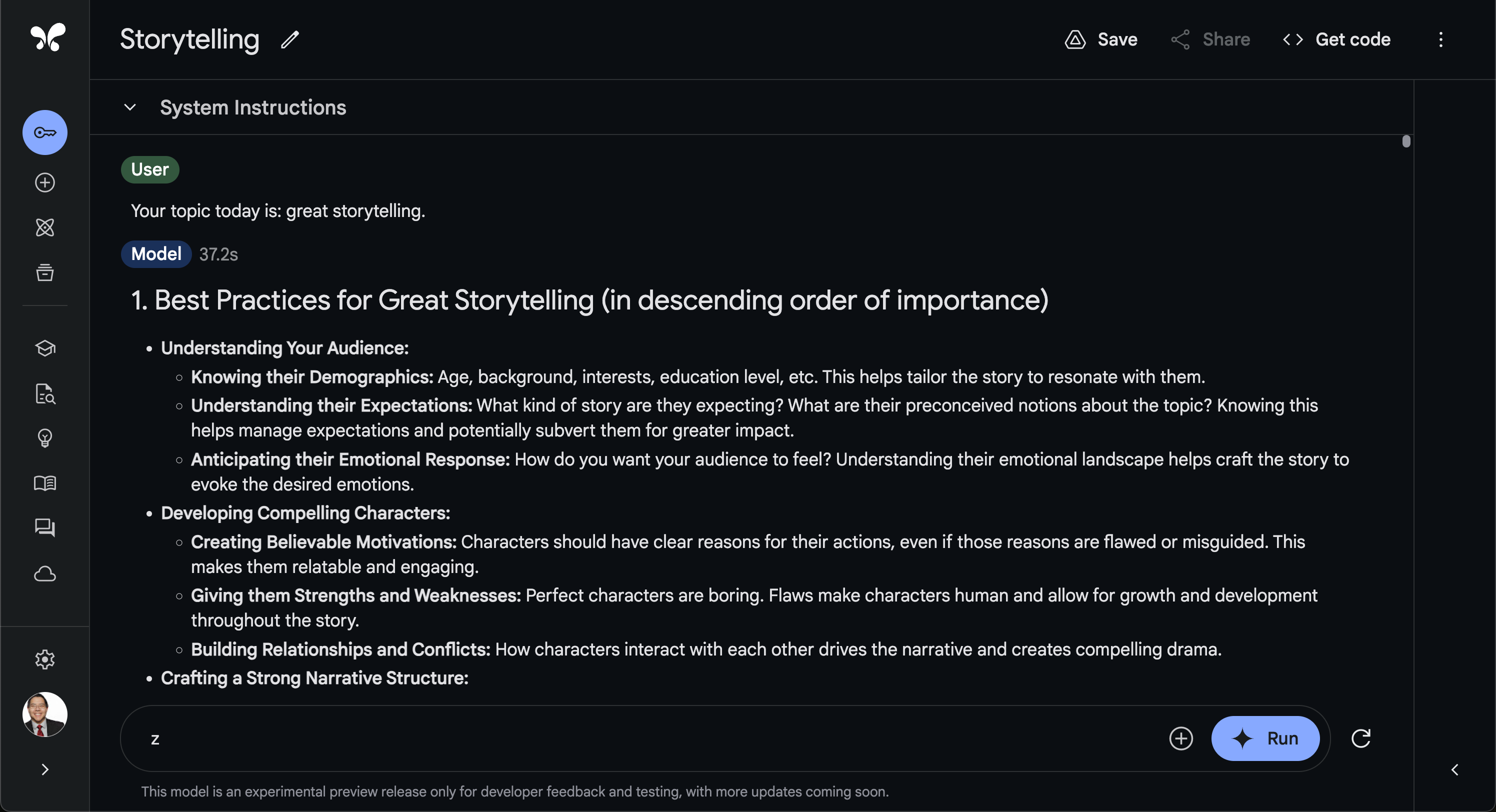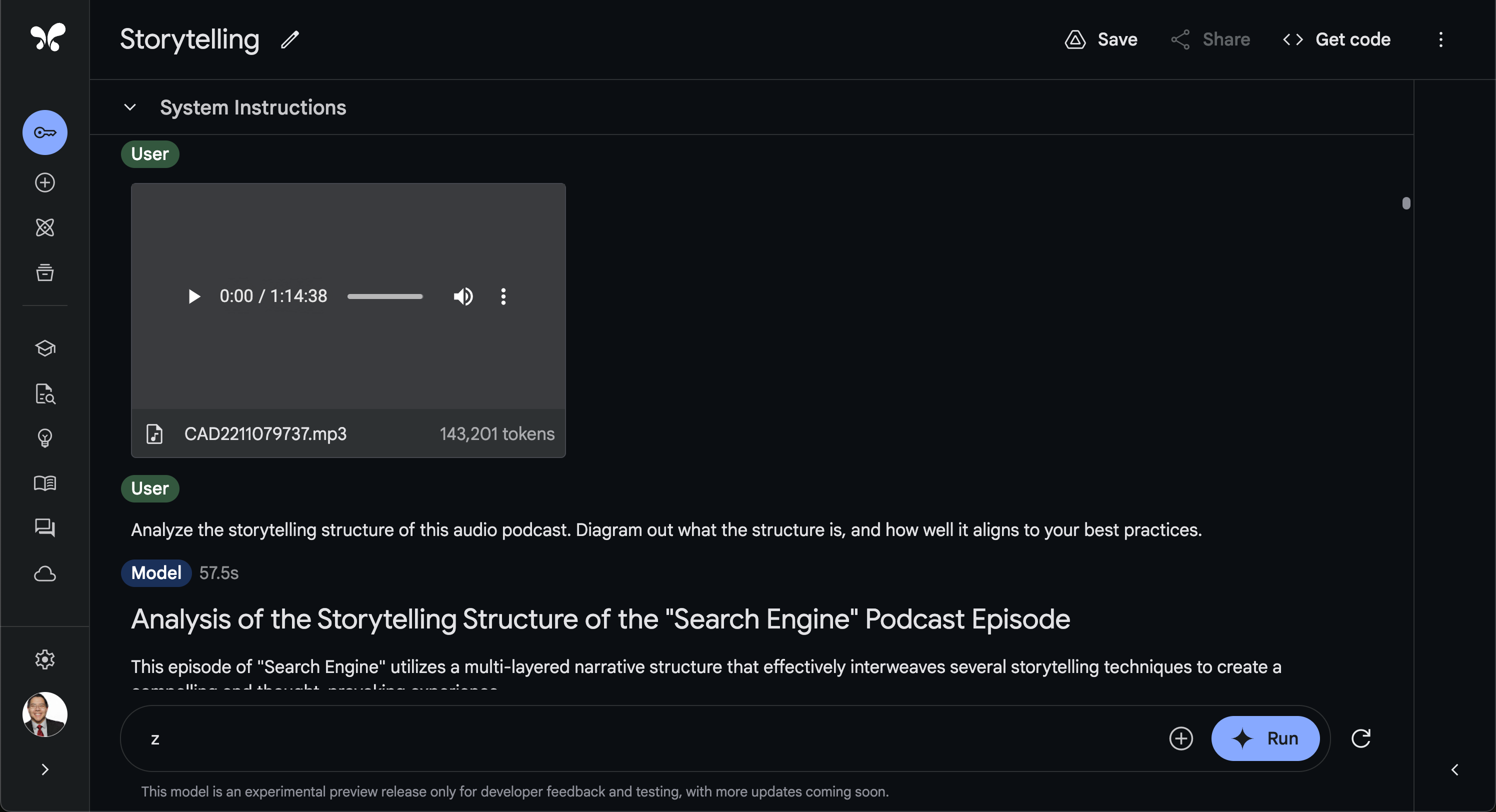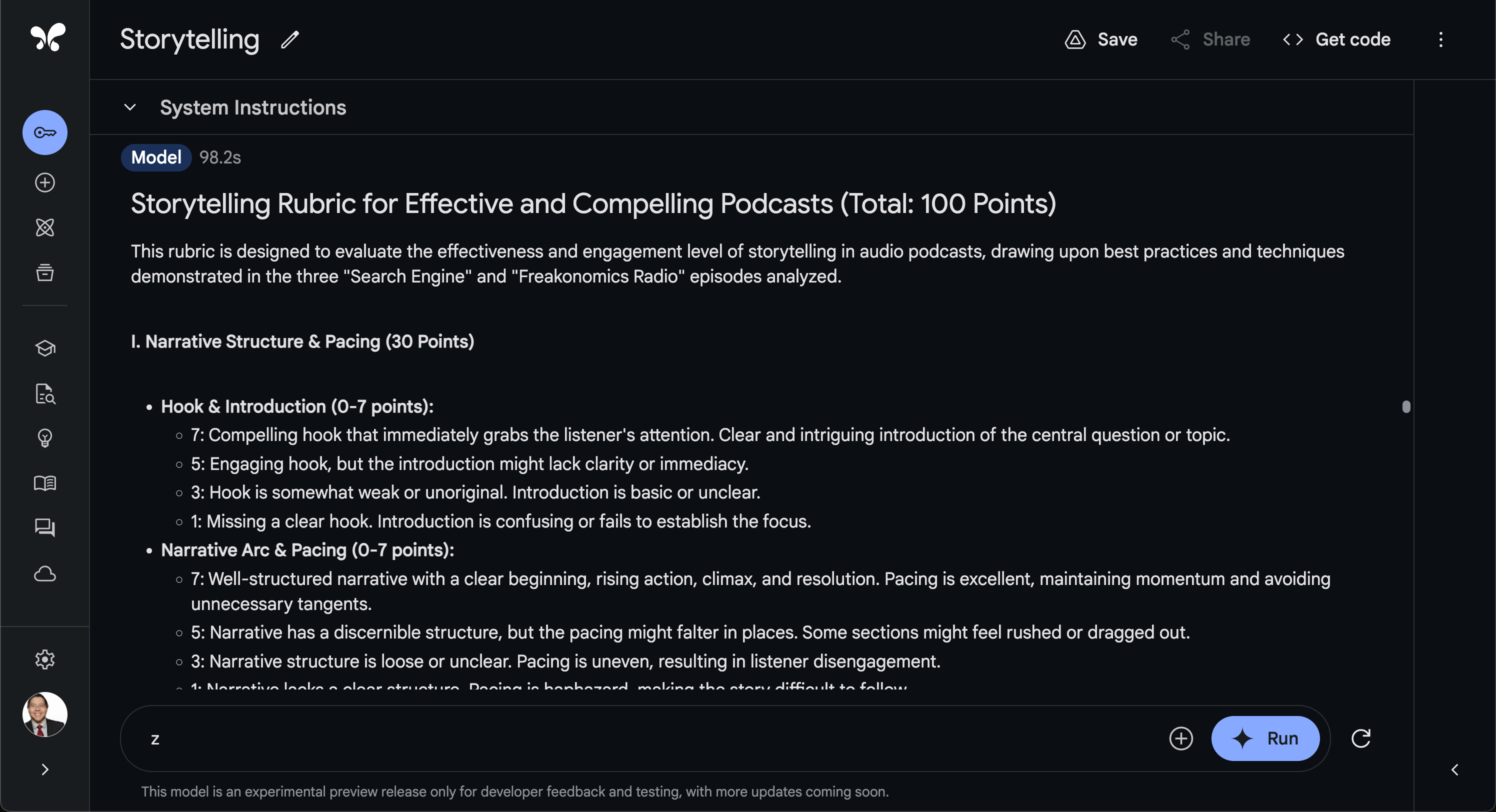Almost Timely News: 🗞️ How To Use Generative AI To Understand Good Content (2024-08-11) :: View in Browser
👉 Register for my upcoming free webinar, Generative AI for Hospitality!
Content Authenticity Statement
90% of this week’s newsletter was generated by me, the human. You’ll see some AI outputs in the opening section, and if you’re watching or listening, I used Eleven Labs to synthesize the voice of a former Supreme Court Justice who died in 1985. Learn why this kind of disclosure is a good idea and might be required for anyone doing business in any capacity with the EU in the near future.
Watch This Newsletter On YouTube 📺
Click here for the video 📺 version of this newsletter on YouTube »
Click here for an MP3 audio 🎧 only version »
What’s On My Mind: How To Use Generative AI To Understand Good Content
What constitutes good content? And can generative AI help us make it?
I’ve been thinking a lot about good content lately, about compelling content. What makes one thing worth paying attention to, and not another?
For example, you can’t go for more than two thumb swipes on any social network without someone complaining that reach is in the toilet, that engagement is down, that people aren’t paying attention. And yet, when you hit up the channels and accounts of the top tier content creators, or when you listen to system admins like Adam Mosseri of Instagram, they all say the same thing: there’s no economic incentive for content channels to throttle popular content. It makes no business sense to show people less of what they love. Taking away great content from people would reduce ad exposures, and that’s contrary to their business model.
That makes sense.
So why are people complaining about reduced reach? A good number of folks who are complaining are… just not creating content people want.
This is a familiar challenge for marketers. Most marketers know we’re creating stuff people don’t love. We’re creating – on a good day – mediocre content, not good content, not great content.
So how would we change this around? How do we build good content?
Part 1: What is Good Content, Anyway?
First we have to know what good content is. Quick, what is it? What are the common characteristics of good content, and how can we use generative AI to help?
A lot of people crap on generative AI for making bland, boring, generic content, and there’s validity to that criticism. Generative AI is very much like the mythical genie of fairy tales and legends. You get exactly what you ask of it. If you ask bland, boring questions – like, “What makes good content?” – you get bland, boring answers. It’s the nature of AI itself to return probabilities based on the questions we ask it. The more average the question, the more average the answer.
But that doesn’t answer the question of what good content is, does it? It just sort of shifts blame. So how do you define good content?
Here’s how a couple of folks talk about it. My friend Ann Handley:
“There are three keys to creating good, quality, engaging content… And the three keys are bigger, braver, and bolder, right? Bigger stories. Braver marketing or braver marketers as well. And bolder writing and bolder tone of voice.”
Or this quip from Supreme Court Justice Potter Stewart in 1964 in Jacobellis v. Ohio:
“I shall not today attempt further to define the kinds of material I understand to be embraced within that shorthand description; and perhaps I could never succeed in intelligibly doing so. But I know it when I see it…”
While that’s Justice Stewart’s definition of obscenity, you could make the case that’s the definition of good content as well. Good content is content we like, content we enjoy, content we’re compelled to consume, whether it’s celebrities suffering eating increasingly hot wings or investigative journalism answering obscure questions like the hardest nightclub to get into in the world.
And therein lies one of the greatest challenges of good content. It varies from person to person.
Part 2: Good Content is Good Storytelling
Okay, so if good content is an individual choice, how are we supposed to create it at scale? There are some fundamental truths to good content. One of those truths is that good content is often a good story.
Invariably, good content tells a story, because we’re adapted well to consume stories. Millennia before the printing press, we were sitting around campfires telling stories. What to eat, what not to eat, why Bob isn’t around the campfire because he got mauled by a bear… we’ve learned through millennia to capture the information we need to share in a story.
Here’s one of the challenges of storytelling. Besides the infinite number of ways there are to tell a story, our audience has specific kinds of stories that resonate with them best. If we want to be effective in our storytelling, in our content creation efforts, we need to align our content with what our audience finds most compelling.
How do you do that? This is an area generative AI can’t help you with, but a real audience can. With your existing audience, ask them a simple question: what shows do you enjoy, especially long form content like podcasts?
This is a critical question because the marketplace has already produced good content. The audience has already decided for themselves what is good and what isn’t, especially for content people consume outside of work. We don’t need to define what good content is – and in aggregate, we can’t anyway. But we can absolutely get a sense from our audience of the content they already appreciate.
Once you have some answers from your audience, we can put generative AI to work in a way that we really can’t. Here’s why.
Stewart’s definition encapsulates a really important concept. Language itself is a form of code, a way to take very deep concepts and shorten them. Think about how much data is encoded in the word apple or daughter or sushi. There’s two challenges with language like this. First, the language is so compact that we have to fill in a lot of the blanks ourselves.
What kind of apple? Fuji? Granny Smith? The computer company? There’s a lot of concepts packed into that one word.
Second, almost every word is relative to our experiences. I love sushi. You may hate sushi. And there are so many kinds of sushi that my association of the word may bring up a very specific kind of sushi as a mental concept, and that is guaranteed to be different in someone else’s head.
For example, I might have a certain mental and emotional association with even a simple word like mother. Some people have strong positive associations with it. Others have strong negative associations. When we use that term, we may be invoking wildly different associations in people’s heads.
Because of this, we have a very hard time putting into words why we like something. We know when we like it. We know when we don’t like it. But we generally struggle to explain it in a complete and comprehensive way, partly because of how much language we need to encapsulate it, and partly because we have our own emotional associations that can color our perceptions.
That’s what Justice Stewart was talking about 60 years ago in his ruling. We know it when we see it, not because we don’t have the words to describe it, but because the sheer amount of language we’d need to surround the concept would be greater than an army of ants surrounding a slice of watermelon.
Part 3: Generative AI Understands Good Content If We Tell It To
Generative AI models don’t have these problems. They have a nearly infinite vocabulary, and because they’re not sentient, self aware, or emotionally intelligent, they don’t have the loaded associations that you or I might have as individuals. That same averageness that causes them to generate bland content with poor prompts becomes an advantage when we need to find words to describe something.
Let’s put this to practical use. Suppose we learn from our audience that they really love shows like Freakonomics or Search Engine. That alone is helpful information, information that could go in something like an ideal customer profile. But what if we could understand the meta-structure of these shows, to see how they’re formatted and structured to be compelling?
We absolutely can. Today’s generative AI models like GPT-4-omni, Claude Sonnet 3.5, and Google Gemini can all accept things like audio and video files as inputs. Instead of trying to describe good content ourselves, what if we could have a generative model consume some of our audience’s favorite shows and help us understand the practices these specific shows use to create good content?
In other words, we take the final dish and we reverse engineer the recipe using generative AI. If we can understand the recipe, then we can take the recipe’s concepts and apply it to our own content, converting it from good to better.
Let’s step through the basic process. The video edition of this newsletter shows each step in action, should you want to see it. First, using the Trust Insights PARE AI Framework, I prompt the model to spit out everything it thinks it knows about great storytelling. This step helps us diagnose whether the model even knows what it’s talking about or not. It also serves to build an insanely rich prompt for future questions because every subsequent prompt in a conversation is composed of the entire conversation to that point.

Once we have a solid base of knowledge for what good storytelling is, by adjusting the model’s output if necessary, we need to show, not tell the model what good storytelling is. We need, as Justice Stewart said, to help the model know it when it sees it. Once we’ve loaded a few episodes, we ask the model to analyze the structure of the shows. How do they do what they do? What are the strategies, tactics, and ways they implement their practices?

We next ask the model to build us a scoring rubric, a way for us to analyze our own content against the best practices that the model observed from what we know to be good content. This scoring rubric accomplishes two things. First, it helps the model be more granular about how it assesses and analyzes content. Second, it helps us, the humans, better understand the criteria for content we create.

Finally, once we’ve built the informational infrastructure for understanding compelling storytelling in a very specific format, we can take that as a template and have generative AI examine our existing content and reformat it, apply these best practices to it. It’s important to note here that we want to apply the structure and the concepts of our best practices content, not replicate the content itself.
Depending on the level of control you want to have over the final output, you could direct generative AI to rewrite your content to adhere to the general best practices, or simply produce an outline that you can then manually reorder your content with.
Conceptually, imagine you had a country song, and you knew what made a great rock song. You’d apply the principles of rock to your song, but it would still be your song. This is critical – if you want this technique to work well but you don’t want to lose your own voice and unique style, you have to bring your own first draft to the party. Don’t have AI build it – you build the country song, then have it make the rock song from it.
And if you want to turn the dial to 11, you could also incorporate your ideal customer profile in at this stage as well, to have the model critique not only your storytelling skills but also how well aligned the content itself is to what your audience cares about.
Part 4: Let AI Help You Make Good Content
So, let’s wrap up. There is no such thing as good content in aggregate, any more than there’s such as thing as the average person. There is content your specific audience appreciates.
There are thus no best practices to create good content for the average audience member, but patterns we can learn from other content our audience already appreciates.
We use generative AI to identify these patterns, distill them down into concepts we apply to our own content, to better make it fit what our audience appreciates – but we do so with an eye towards maintaining our voice and originality, just putting the content in a more appealing format.
And when we do so, when we apply the structures and practices our audiences appreciate to our existing content, we’ll make something they specifically like better.
The road to good content has been paved by the marketplace as a whole. We just need the sense and the tools to see what’s been done and travel down that road with our own content.
And if you’d like help doing this sort of content analysis work with AI, shameless plug, my company Trust Insights does that (and much more).
How Was This Issue?
Rate this week’s newsletter issue with a single click. Your feedback over time helps me figure out what content to create for you.
Share With a Friend or Colleague
If you enjoy this newsletter and want to share it with a friend/colleague, please do. Send this URL to your friend/colleague:
https://www.christopherspenn.com/newsletter
For enrolled subscribers on Substack, there are referral rewards if you refer 100, 200, or 300 other readers. Visit the Leaderboard here.
Advertisement: Bring Me In To Speak At Your Event
Elevate your next conference or corporate retreat with a customized keynote on the practical applications of AI. I deliver fresh insights tailored to your audience’s industry and challenges, equipping your attendees with actionable resources and real-world knowledge to navigate the evolving AI landscape.
If you’d like to see more, here are:




Leave a Reply